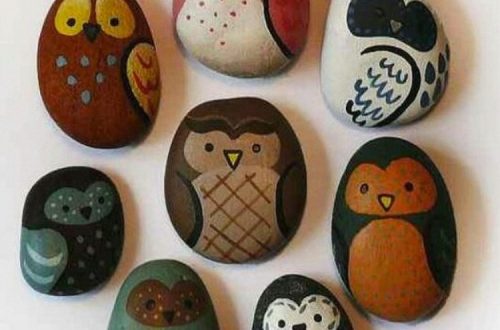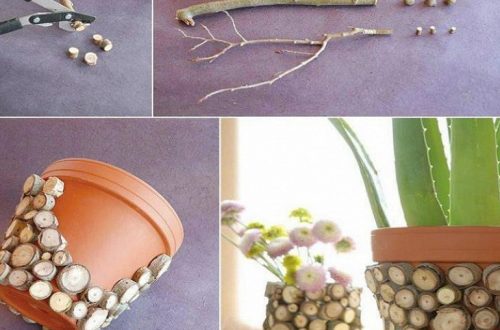Part 1: The Benefits of Embracing Creative Hobbies
1. Stress Relief:
Engaging in creative activities such as knitting, painting, or pottery can provide a welcomed break from the everyday stresses of life. Research has shown that these activities can help to reduce cortisol levels in the body, resulting in a calmer and more relaxed state of mind. The repetitive motions and focus required for many creative hobbies also have a meditative effect, promoting mindfulness and a sense of peace.
2. Self-Expression:
Creative hobbies serve as a powerful outlet for self-expression and personal exploration. Whether it’s through the vibrant colors on a canvas, the intricate stitches of a quilt, or the sculpted shapes in clay, engaging in creative pursuits allows individuals to communicate their thoughts, emotions, and experiences in a tangible and deeply meaningful manner. This form of expression cultivates an avenue for personal introspection and exploration, enabling individuals to convey their innermost feelings and experiences through artistic creation. By immersing themselves in the artistic process, individuals can achieve a deeper understanding of themselves, their perspectives, and their unique creative voice. This self-expression not only allows for the externalization of inner thoughts and emotions but also serves as a catalyst for personal growth and self-discovery. Through creative hobbies, individuals can access a fulfilling pathway for connecting with themselves, nurturing their creativity, and enhancing their overall sense of fulfillment and well-being.

Part 2: The Joy of Handmade Creations
1. Unique and Personalized:
Engaging in creative hobbies provides the gratifying opportunity to craft one-of-a-kind, personalized items. Whether it’s knitting a bespoke scarf, designing a custom piece of jewelry, or meticulously crafting a piece of furniture, the sense of accomplishment derived from creating something unique and special is unparalleled. Handmade creations carry with them a distinctive touch and reflect the personal artistry and creativity of the maker. This individualized nature lends an intimate and meaningful quality to the items, evoking a sense of pride and satisfaction in the creator.
Moreover, these handmade treasures also hold significant sentimental value and can serve as heartfelt, personalized gifts for friends and loved ones, imbuing each piece with the warmth and thoughtfulness of the creator. The act of gifting a handmade creation establishes a tangible connection, infusing the present with a sense of intimacy and care. Ultimately, the process of creating personalized items not only yields extraordinary personal satisfaction but also fosters meaningful connections and cherished moments of human connection through the art of giving.
2. Connection to the Past:
Engaging in traditional creative hobbies like quilting, woodworking, or pottery can provide a profound connection to the past and a deep appreciation for timeless arts and crafts. These enduring skills, often passed down through generations, offer a beautiful sense of continuity and heritage. By carrying on these time-honored traditions, individuals can feel a profound connection to their ancestors and a proud sense of cultural legacy.
Furthermore, crafting items by hand fosters a deeper understanding and appreciation for the craftsmanship of earlier generations, who relied on these skills to create essential everyday items. Feeling the wooden grain under their hands, joining fabric pieces together, or shaping clay brings to life the same techniques used by artisans throughout history. This not only preserves the legacy of traditional crafts but also instills a sense of respect for the inherent knowledge, dedication, and creativity of our forebearers. Engaging in such traditions serves as a means of honoring the past, celebrating the beauty of handmade items, and preserving valuable skills that have both historical and personal significance.

Part 3: Finding Community and Connection
1. Social Interaction:
Engaging in creative hobbies often presents numerous opportunities for social interaction and connection. Knitting groups, painting classes, and pottery workshops, among others, provide settings for individuals with similar interests to come together and share their passion for creativity. These gatherings cultivate a sense of community and camaraderie, offering a platform for skill-sharing, learning, and mutual inspiration. Additionally, they are conducive to forming meaningful connections and friendships with like-minded individuals who share a common enthusiasm for artistic expression. Within these social settings, participants are able to engage in conversations, receive feedback, and even collaborate on projects, fostering an enriching environment for personal and creative growth.
As a result, the experience of bonding with others over shared hobbies not only enhances the learning process but also nurtures a sense of belonging and connection, ultimately contributing to a richer and more fulfilling creative journey. Through these communal experiences, individuals not only expand their creative horizons but also cultivate lasting friendships and a supportive network within the creative community.
2. Empowerment:
Engaging in a creative hobby can become an empowering avenue for individuals to connect with others and impart their skills and knowledge. Whether it involves teaching a friend how to crochet, showcasing artwork in a local art exhibition, or selling handmade items at a craft fair, creative pursuits offer a platform for sharing expertise and fostering connections. By sharing their creative talents, individuals can instill confidence in themselves and inspire others, leading to a broader sense of empowerment and self-assurance. This act of sharing not only nurtures a sense of fulfillment but also instills a feeling of contribution to the wider community.
As individuals share their creative passions and knowledge, they play an active role in shaping a vibrant and supportive creative community, thus contributing to a sense of purpose and fulfillment. Ultimately, the act of harnessing creative abilities to connect with and positively influence others can lead to personal growth, self-fulfillment, and an enhanced feeling of community and belonging.

Part 4: The Value of Handmade Happiness
1. Mindful Consumption:
In a world dominated by mass production and consumerism, embracing creative hobbies offers a meaningful alternative to mindless consumption. By devoting their time, energy, and creativity to crafting handmade items, individuals invest themselves in objects that hold genuine value and significance. This mindful approach to creation fosters a deeper and more meaningful connection to the items produced, leading to a heightened appreciation for the time, effort, and artistry involved in their crafting.
Furthermore, creating handmade goods often encourages a heightened sense of mindfulness in consumption, as individuals develop a greater awareness of the resources and labor required to produce the items they use. By embracing this intentional approach to craftsmanship and consumption, individuals can contribute to a shift towards a more sustainable and mindful lifestyle, wherein the focus is on quality, intentionality, and the value inherent in handmade and personally crafted items. This not only enriches their own lives but also contributes to a broader movement towards greater environmental and ethical consciousness.
2. Sustainable Living:
Engaging in creative hobbies can significantly align with sustainability and an eco-friendly lifestyle. Through activities like crafting our clothes, creating home decor, and crafting gifts, we diminish our dependence on mass-produced and frequently environmentally harmful goods. Additionally, by employing sustainable practices such as repurposing materials, using natural dyes, or upcycling, individuals can actively contribute to a more sustainable way of living. This approach not only supports environmental conservation by decreasing waste but also fosters mindful and conscious consumption. By opting for handmade and sustainable creations, individuals can play an active role in reducing their environmental footprint and supporting ethical, eco-conscious practices. Furthermore, these activities can nurture a deeper appreciation for the materials used and the creative process itself. Embracing sustainable practices through creative hobbies allows individuals to align their passion for crafting with their commitment to environmental stewardship, contributing to a more responsible and sustainable lifestyle.
In conclusion, embracing creative hobbies can bring about numerous benefits, from stress relief and self-expression to social connections and empowerment. The joy of creating handmade items can provide a sense of fulfillment and purpose, while also promoting mindful consumption and sustainable living. Whether it’s through knitting, woodworking, painting, or any other creative endeavor, finding happiness in handmade creations is a valuable and enriching pursuit.



